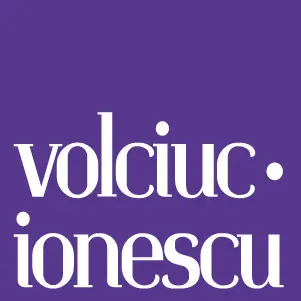KEY POINTS
Romanian corporate insolvency is governed by a modern legal framework aimed at rescuing the insolvent debtor, while also ensuring (at least, partial) payment of debts towards creditors.
The commencement of insolvency may be requested by a creditor who has a certain, liquid and due claim of at least EUR 8,800 which has not been paid for more than 60 days as of the due date. Upon commencement of the insolvency, all court and enforcement actions against the insolvent debtor are automatically suspended and claims against the insolvent debtor can be pursued only within the framework of the insolvency procedure.
All creditors should register their claims against the insolvent debtor with the competent court within 45 days as of the opening of the insolvency procedure. Secured creditors will have a general priority to proceeds obtained from the sale of their duly perfected collateral.
LEGAL FRAMEWORK
Romanian corporate insolvency is generally regulated under Law No. 85/2014 on insolvency prevention and procedures (‘the Insolvency Code’) – a modern legal framework also covering special provisions for credit institutions, insurers, groups of companies, preventive measures and cross-border insolvency.
PLAYERS INVOLVED IN THE INSOLVENCY PROCEDURE
Court and syndic judge
Court hearings within the insolvency procedure fall within the competence of the tribunal where the debtor has its registered headquarters, and are led by a syndic judge randomly selected through a computerised system. The syndic judge decides on the commencement of the insolvency procedure and resolves any claims and challenges submitted by the parties under the insolvency procedure.
Creditors’ assembly and creditors’
committee
The creditors should register their secured and/or unsecured claims with the competent court in order to take part to the insolvency procedure. Upon such registration, creditors become members of the creditors’ assembly, which may:
- propose the appointment of a certain judicial administrator or liquidator and assess its activity;
- approve reorganisation plans;
- decide upon important aspects during the insolvency procedure such as new financings for the insolvent debtor; and
- appoint a creditors’ committee of three or five creditors.
Judicial administrator
The syndic judge appoints an authorised insolvency practitioner as judicial administrator of the insolvent debtor at the proposal of the majority creditors or, in certain cases, even at the proposal of the insolvent debtor. The judicial administrator manages or supervises the day-to-day business of the insolvent debtor during the reorganisation phase of the insolvency procedure.
Special administrator
The general meeting of the shareholders of the insolvent debtor appoints a special administrator upon the commencement of the insolvency procedure if the management and representation right of the insolvent debtor is not lifted by the court. The special administrator manages the activity of insolvent debtor’s activity under the supervision of the judicial administrator, during the reorganisation phase of the insolvency procedure. Unlike the judicial administrator, no special licence is required for a person to be appointed as special administrator.
Judicial liquidator
If the reorganisation of an insolvent debtor is not possible and/or the insolvency procedure leads to bankruptcy, the liquidation of the assets of the insolvent debtor and the distribution of liquidation proceeds is carried out by a judicial liquidator, who, similar to the judicial administrator, is also an authorised insolvency practitioner subject to appointment by the syndic judge.
THE INSOLVENCY PROCEDURE
Definition of insolvency
The Insolvency Code defines insolvency as the patrimonial status of a debtor characterised by lack of sufficient funds for the payment of the due debts, with two forms:
- presumed insolvency – when the insolvent debtor has not paid debts towards creditors for more than 60 days as of their due date; and
- imminent insolvency – when it is proved that the insolvent debtor will not have sufficient available funds to pay its debts at the due date.
Commencement of the insolvency
The syndic judge rules on the commencement of the insolvency procedure at request of either the insolvent debtor itself (for presumed or imminent insolvency), or a creditor (for presumed insolvency) who has a certain, liquid and due claim which has not been paid for more than 60 days as of the due date. The minimum threshold of the debt is approximately EUR 8,800.
Registration of claims
All creditors should register their claims with the competent court within 45 days as of the opening of the insolvency procedure. A stamp duty of approximately EUR 50 is payable in connection with such registration.
Main stages
The general insolvency procedure may take an insolvent debtor in two directions:
- Reorganisation – aimed at rescuing the insolvent debtor, while also ensuring (at least, partial) payment of debts towards creditors, it is based on a reorganisation plan proposed by the insolvent debtor, judicial administrator or creditor(s) holding at least 20% in total claims. The reorganisation plan is approved by the creditor’s assembly (on the basis of classes of creditors) and confirmed by the syndic judge and may cover:
- operational and/or financial restructuring of the insolvent debtor;
- corporate restructuring by way of changing the share capital structure of the insolvent debtor; or
- decrease of the activity by liquidation of assets.
- Bankruptcy and liquidation – aimed at liquidating all assets of the insolvent debtor and the distribution of the proceeds to its creditors according to the preference order set out under the Insolvency Code (see below), followed by the dissolution of the insolvent debtor.
Closing of the insolvency procedure
The insolvency procedure is closed when:
- there are no assets left in the patrimony of the insolvent debtor;
- there are no requests for registration of claims submitted by the creditors;
- all payment obligations assumed under the reorganisation plan have been fulfilled; or
- all liquidation proceeds have been distributed or placed in bank accounts.
EFFECTS OF THE INSOLVENCY PROCEDURE
Suspension of pending court actions and enforcements
Upon commencement of the insolvency procedure all court and enforcement actions against the insolvent debtor are automatically suspended and claims against the insolvent debtor can be pursued only within the framework of the insolvency procedure.
Grey period
Certain acts and operations concluded and performed within a period of two years before the commencement of the insolvency procedure may be annulled by the syndic judge at the request of the judicial administrator, judicial liquidator, creditors’ committee or creditor holding more than 50% in total claims. If such annulment occurs, the insolvent debtor’s counterparty should return the assets received from the insolvent debtor and shall have a claim for reimbursement of price, which may be recovered in the insolvency procedure together with the claims of the other creditors.
The Insolvency Code provides two general types of acts and operations which can be annulled:
- operations concluded in the last six months before the commencement of the insolvency procedure where fraud against the creditors’ interests is presumed, such as:
- operations where the performance of the insolvent debtor obviously exceeded the value of the counterperformance received by the insolvent debtor;
- ownership transfers towards a creditor for payment of debts, if the amount which the creditor would receive in the bankruptcy phase would be lower than the value of the transfer operation;
- creation of a preference right for a non-secured receivable;
- acts and operations concluded with the insolvent debtor during the last two years before commencement of the insolvency procedure by:
- a shareholder holding at least 20% of the share capital of the insolvent debtor;
- a member of the management or supervision bodies of the insolvent debtor;
- any other person holding a position of control over the insolvent debtor.
Termination of ongoing contracts
Ongoing contracts may continue to be carried out after the commencement of the insolvency procedure and any contractual clause providing for termination of a contract due to the opening of the insolvency procedure is null. However, within three months as of the commencement of the insolvency procedure, for the purposes of maximising the patrimony of the insolvent debtor, the judicial administrator or liquidator may terminate (with payment of damages for the contractor) any contract, unexpired leases or other long-term contracts as long as such contracts have not been totally or substantially performed.
Liability of the persons responsible for the insolvency
Upon the request of the judicial administrator, judicial liquidator, creditors’ assembly or creditor(s) holding at least 50% in total claims, the members of the management or supervision bodies of the insolvent debtor or any other person which contributed to the insolvency of the debtor may be liable by means of a decision of the syndic judge for the damage caused by the wrongful act of that person, such as of the persons who:
- have used the assets or credit of the insolvent debtor in their own interest or in the interest of other persons;
- have used damaging means to procure funds for the insolvent debtor;
- have paid with preference a creditor on the expense of the other creditors, in the month prior to the insolvency; or
- any other intentional act which contributed to the insolvency of the debtor.
Liquidation of assets
The judicial administrator or judicial liquidator may dispose of the assets of the insolvent debtor upon approval of the creditors’ assembly, eg by means of individual or business sale, public auction or direct negotiation.
CREDITORS’ RANKING
Secured claims
Secured creditors hold claims which are secured with any kind of privilege, mortgage or guarantee, dully perfected (eg movable mortgages registered with the Electronic Archive, immovable mortgages registered with the land book). Secured creditors will have a general priority to proceeds obtained from the sale of their duly perfected collateral, provided that such proceeds shall first satisfy:
- taxes, fees and costs in connection with the sale of the assets (including judicial administrator fees); and
- claims of secured creditors which arise after the commencement of the insolvency procedure.
If a secured creditor’s claim is not (or cannot be) fully satisfied following the sale of its collateral, the outstanding amounts will be deemed as unsecured claims.
Unsecured claims
Creditors are generally paid in the following order:
- taxes, fees, costs and expenses of the insolvency procedure;
- claims under financings made available to the company during the insolvency procedure;
- claims of employees;
- claims arising during the insolvency procedure for carrying out the operations of the insolvent company, claims regarding damages for termination of ongoing contracts or annulment of past contracts;
- budgetary claims;
- claims of third parties relating to alimony, minors’ allocation or other regular subsistence payments;
- claims arising under bank loans or supply of products, services or works, rent, or leasing arrangements and bonds (other than such claims of the insolvent debtor’s group members);
- other unsecured claims (other than such claims of the insolvent debtor’s group members); and
- subordinated claims, in the following order of priority:
- claims of bad-faith third parties that have not returned the assets or their value following annulment of contracts; and
- claims under shareholder loans if that creditor holds at least 10% of the insolvent debtor’s share capital, and claims under free-of-charge acts.




